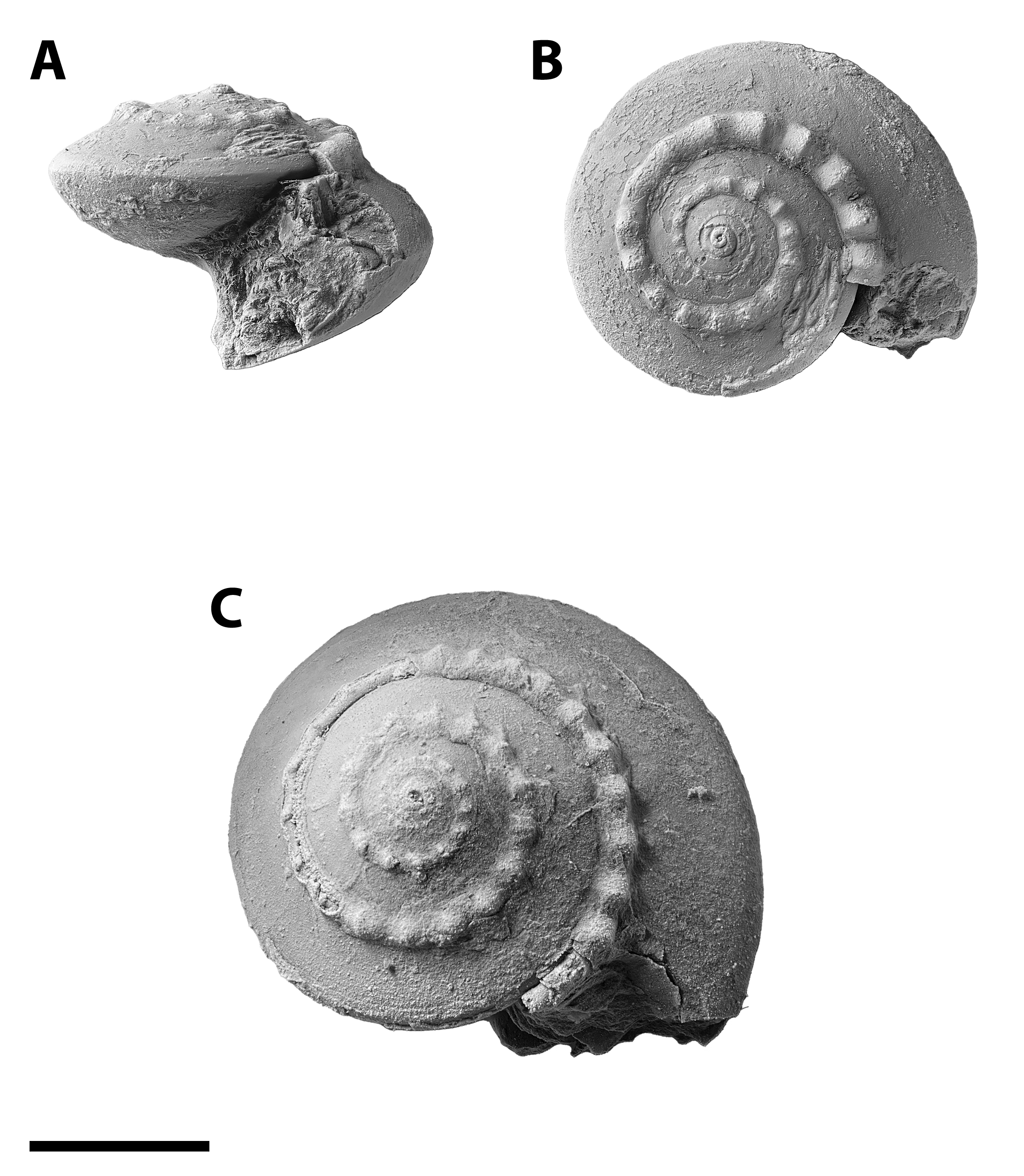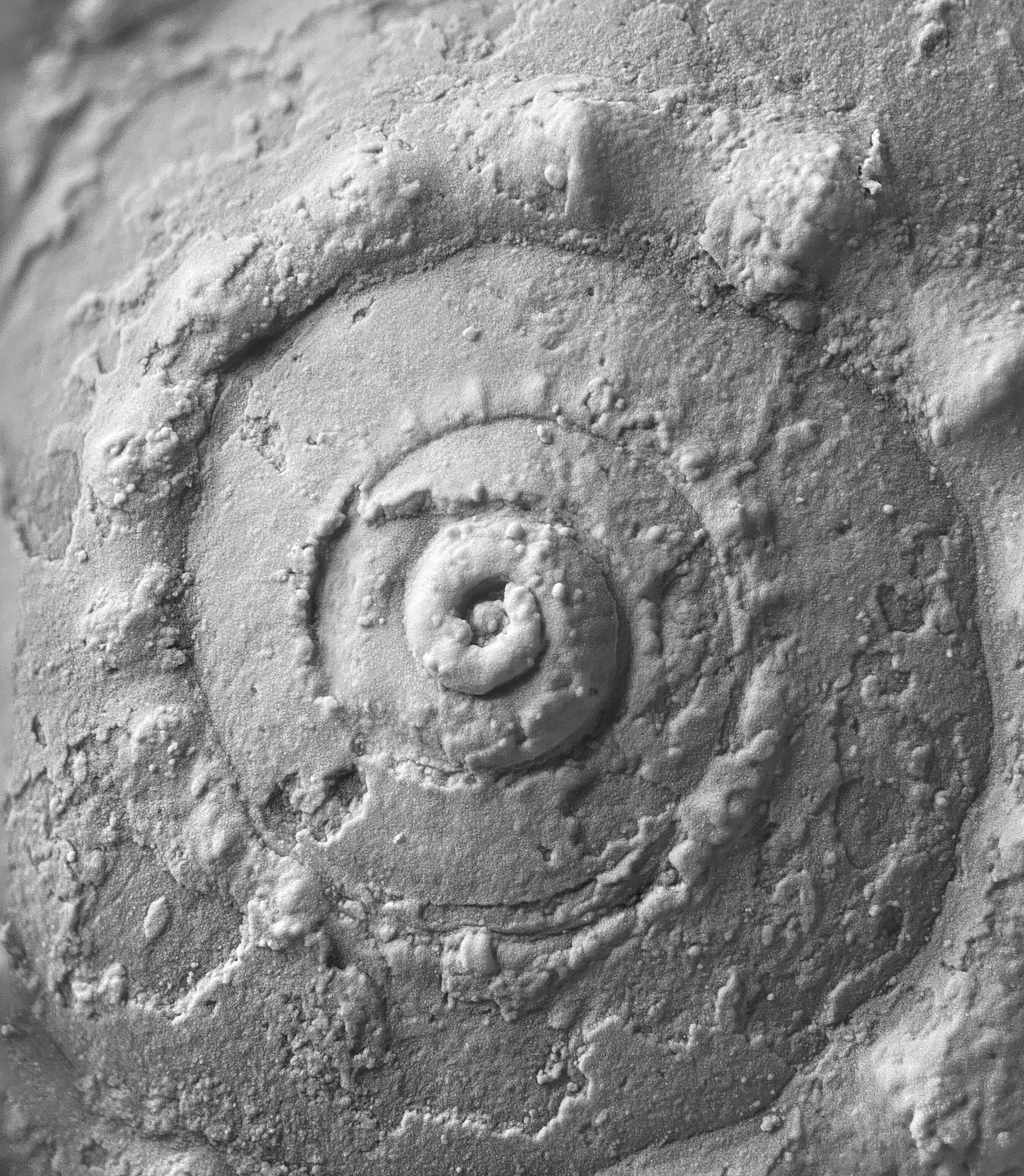Order Pleurotomariida Cox & Knight 1960
Superfamily Eotomarioidea Wenz, 1938
Family Eotomariidae Wenz, 1938
Genus Trepospira Ulrich and Scofield 1897
Species sphaerulata Conrad, 1842
Conrad named Pleurotomaria sphaerulata in 1842 from bedrock in the Allegheny Mountains east of Armstrong County. Conrad named many species from this location, including gastropods known today as Worthenia and Strobeus. Knight (1941) later wrote that Conrad’s type specimen was missing, as are most or all his specimens from the early 19th century. He wrote an updated description based on specimens from the Illinois State Geological Survey, noting its trochiform shape, lack of an umbilicus, and a row of nodes at the upper suture. It also has a selenizone, which is usually obscured on all whorls except the final one.
This species is uncommon from CG-K and challenging to find at CG-PT. The shells are thin and often crushed flat but occasionally found in near-perfect shape. There is no ornamentation on the shell surface save for its unmistakable nodes at the suture that shrink and swirl toward the apex. The rest of the shell is featureless, with a polished surface. Even when crushed, these nodes can make identification easy.


References
- Conrad, T. A., 1842. Observations on the Silurian and Devonian systems of the United States, with descriptions of new organic remains. Journal of the Academy of Natural Sciences of Philadelphia 8(2):228-280
- Ulrich, E. O., and Scofield, W. H., 1897. The Lower Silurian Gastropoda of Minnesota. The Paleontology of Minnesota 39(2):813-1081

Late Carboniferous Fossils from the Glenshaw Formation in Armstrong County, Pennsylvania
Preface | The Photographic Process
Localities: Locality SL 6445 Brush Creek limestone | Locality SL 6533 Pine Creek limestone
Bivalvia: Allopinna | Parallelodon | Septimyalina
Cephalopoda: Metacoceras | Poterioceras | Pseudorthoceras | Solenochilus
Gastropoda: Amphiscapha | Bellerophon | Cymatospira | Euphemites | Glabrocingulum | Meekospira | Orthonychia | Patellilabia | Pharkidonotus | Retispira | Shansiella | Strobeus | Trepospira | Worthenia
Brachiopoda: Cancrinella | Composita | Isogramma | Linoproductus | Neospirifer | Parajuresania | Pulchratia
